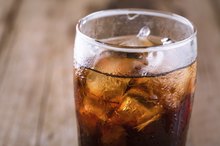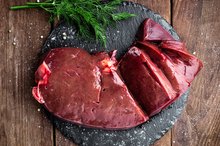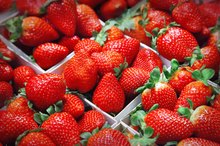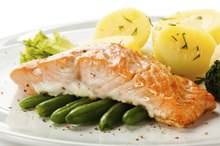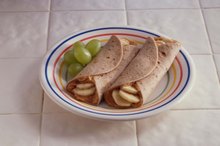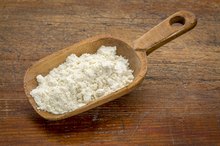Do Clams Cause Arthritic Reactions?
Your big toe might be really grateful if you lay off the all-you-can-eat shellfish buffet. One of the most painful types of arthritis, gout, can be triggered by eating foods high in purines, and shellfish like clams, shrimp, and mussels can make a gout attack more likely to occur.
If you are experiencing serious medical symptoms, seek emergency treatment immediately.
Editor's note: This article was medically reviewed by George Krucik, MD.
Men who ate more seafood, which is very high in purines, were 50 percent more likely to develop gout than men who ate little seafood.
A Harvard Medical School study
What Is Gout?
Gout is a type of arthritis caused by high levels of uric acid in your blood. This uric acid can form crystals inside your joints that can then cause painful inflammation. The most commonly affected joint is the base of the big toe, but other joints can also be involved.
Gout tends to run in families, but certain behaviors can make having a gout attack more likely. Indulging in certain rich foods can increase the levels of uric acid in your blood. In fact, of all the forms of arthritis, gout is the type most tied to what you eat.
- Gout is a type of arthritis caused by high levels of uric acid in your blood.
- Gout tends to run in families, but certain behaviors can make having a gout attack more likely.
Research Connecting Gout to Shellfish
What Causes Gout and Bursitis?
Learn More
A study in the New England Journal of Medicine looked at the intake of proteins and foods high in purines, a component of DNA. Dr. H.K. Choi and his group at Harvard Medical School followed more than 47,000 men and tracked their diets for 12 years.
They found evidence that men who ate more seafood, which is very high in purines, were 50 percent more likely to develop gout than men who ate little seafood. Shellfish like clams are so high in purines that a gout attack may soon follow that delicious briny meal.
- A study in the New England Journal of Medicine looked at the intake of proteins and foods high in purines, a component of DNA.
Other Foods That Can Lead to Gout
The same study showed that eating meats like liver, beef, lamb, and pork, which are also high in purines, led to a 40 percent increase in the risk of gout. Beer is also known to increase uric acid levels in your blood.
But it’s not all bad news.
Wine seems to have little effect on gout, and low-fat dairy products actually have a protective effect against gout. So drink that glass of milk or have a late night yogurt -- you may be safe from gout interfering.
- The same study showed that eating meats like liver, beef, lamb, and pork, which are also high in purines, led to a 40 percent increase in the risk of gout.
Clams and Arthritis
Gout and Shrimp
Learn More
Clams -- well, shellfish at least -- are not necessarily bad when it comes to all types of arthritis. One specific kind of shellfish may actually be beneficial in the treatment of osteoarthritis.
Extracts from the New Zealand green-lipped mussel (Perna canaliculus) have a combination of omega 3 fatty acids and chondroitin that may reduce inflammation and treat joint pain. But be aware that mussels still contain those pesky purines.
If you have gouty arthritis, rather than osteoarthritis, you could end up triggering a gout attack. Always talk with your doctor before taking any medication or dietary supplement.
- Clams -- well, shellfish at least -- are not necessarily bad when it comes to all types of arthritis.
- One specific kind of shellfish may actually be beneficial in the treatment of osteoarthritis.
About the Author
Christine Case-Lo, MS is a freelance writer and special needs advocate. She completed her Master’s degree in Pharmaceutical Chemistry at the University of California, San Francisco and her Bachelor's degree in Bioengineering at the University of California, Berkeley.
Case-Lo is a member of the American Health Information Management Association.
Related Articles
References
- National Institute of Arthritis and Musculoskeletal and Skin Diseases. Gout. Updated April 2016.
- Zhang Y, Chen C, Choi H, et al. Purine-rich foods intake and recurrent gout attacks. Ann Rheum Dis. 2012; 71(9):1448-53. doi:10.1136/annrheumdis-2011-201215
- Fischer E. Ueber die Harnsauer. 1 [On Uric Acid. 1]. Berichte der Deutschen Chemischen Gesellschaft. 1884: 17:328-338. doi:10.1002/cber.18980310304
- Ragab, G., Elshahaly, M., & Bardin, T. (2017). Gout: An old disease in new perspective – A review. Journal of Advanced Research, 8(5), 495–511. doi:10.1016/j.jare.2017.04.008
- Centers for Disease Control and Prevention. Gout. Updated January 28, 2019.
- Zgaga, L., Theodoratou, E., Kyle, J., Farrington, S. M., Agakov, F., Tenesa, A., … Campbell, H. (2012). The Association of Dietary Intake of Purine-Rich Vegetables, Sugar-Sweetened Beverages and Dairy with Plasma Urate, in a Cross-Sectional Study. PLoS ONE, 7(6), e38123. doi:10.1371/journal.pone.0038123
- Choi HK, Gao X, Curhan G. Vitamin C intake and the risk of gout in men: a prospective study. Arch Intern Med. 2009;169(5):502–507. doi:10.1001/archinternmed.2008.606
- Zhang Y, Neogi T, Chen C, Chaisson C, Hunter DJ, Choi HK. Cherry consumption and decreased risk of recurrent gout attacks. Arthritis Rheum. 2012;64(12):4004–4011. doi:10.1002/art.34677
- Arthritis Foundation. Gout Diet: Dos and Don’ts.
- Boban M, Modun D. Uric acid and antioxidant effects of wine. Croat Med J. 2010;51(1):16–22. doi:10.3325/cmj.2010.51.16
- Caliceti C, Calabria D, Roda A, Cicero AFG. Fructose Intake, Serum Uric Acid, and Cardiometabolic Disorders: A Critical Review. Nutrients. 2017;9(4):395. Published 2017 Apr 18. doi:10.3390/nu9040395
- U.S. Department of Health and Human Services and U.S. Department of Agriculture. 2015–2020 Dietary Guidelines for Americans. 8th Edition. Published December 2015.
- U.S. Department of Health and Human Services. Gripped by Gout. NIH News in Health. Published February 2014.
- Kakutani-Hatayama M, Kadoya M, Okazaki H, et al. Nonpharmacological Management of Gout and Hyperuricemia: Hints for Better Lifestyle. Am J Lifestyle Med. 2015;11(4):321–329. Published 2015 Sep 2. doi:10.1177/1559827615601973
Resources
- Choi, H.K. et al. (2004). Purine-Rich Foods, Dairy and Protein Intake and the Risk of Gout in Men. New England Journal of Medicine. Retrieved October 8, 2012
- Brien, S. et al. (2008). Systematic Review of the Nutritional Supplement Perna Canaliculus (Green-Lipped Mussel) in the Treatment of Osteoarthritis. QJM. Retrieved October 9, 2012
- Chang, W.C. (2011). Dietary Intake and Risk of Hyperuricemia, Gout and Chronic Kidney Disease in Elderly Taiwanese Men. Aging Male, 14(3):195-202. Retrieved October 9, 2012


